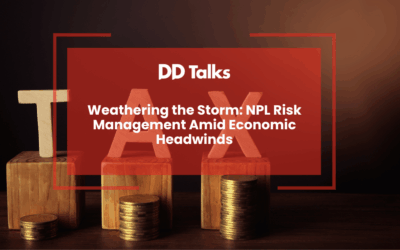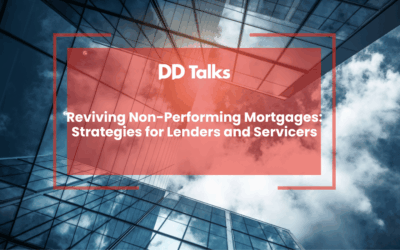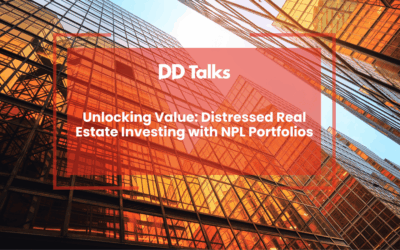Key Takeaways: ESG Securitisations Explained
- Market Transformation: ESG securitisations represent a pivotal innovation in sustainable finance, enabling investors to support environmental and social initiatives while maintaining competitive returns.
- Comprehensive Approach: Unlike traditional securitisations, ESG variants incorporate rigorous sustainability criteria, extending beyond financial metrics to include environmental and social impact assessments.
- Regulatory Momentum: The EU is leading global efforts to standardize green securitisations through frameworks like the EU Taxonomy and Sustainable Finance Disclosure Regulation (SFDR).
- Risk and Opportunity: While ESG securitisations offer portfolio diversification and access to new investor bases, they also require sophisticated risk management and impact measurement strategies.
- Future Potential: Emerging technologies and innovative approaches, such as blockchain verification and AI-powered impact tools, are expected to drive continued market growth and sophistication.
Table of Contents
- Understanding Green and ESG Securitisations: A Comprehensive Overview
- The Evolution of ESG in Modern Capital Markets
- Traditional vs ESG Securitisations: Breaking Down the Differences
- What Are the Benefits and Risks of ESG-Linked Securitisation?
- Navigating the Regulatory Landscape for Green Securitisations
- Addressing Greenwashing Concerns in ESG Securitisations
- Future Outlook: ESG Securitisation Market Trends
Understanding Green and ESG Securitisations: A Comprehensive Overview
Green and ESG securitisations represent a transformative development in sustainable finance, combining traditional securitisation structures with environmental, social, and governance (ESG) principles. These innovative financial instruments package sustainable assets into tradeable securities, enabling investors to support environmental and social initiatives while maintaining market-competitive returns. The market for these instruments has grown exponentially, with European issuance reaching record levels in recent years.
The core components include green mortgages, sustainable infrastructure loans, and renewable energy project financing. These assets must meet strict ESG criteria and demonstrate measurable positive impact. The integration of ESG factors requires robust assessment frameworks and transparent reporting mechanisms to ensure accountability and impact measurement.
The Evolution of ESG in Modern Capital Markets
The journey of ESG integration in capital markets began with green bonds in the early 2000s, evolving into more sophisticated instruments including securitisations. This transformation has been driven by increasing investor demand for sustainable investments, regulatory pressure, and growing awareness of climate-related financial risks. The European market has been particularly progressive, with the EU’s sustainable finance agenda catalysing rapid market development.
Key milestones include the establishment of the Green Bond Principles, the development of sustainability-linked loan standards, and the emergence of social impact bonds. These innovations have laid the groundwork for more complex ESG-linked securitisation structures, creating new opportunities for sustainable investment at scale.
Traditional vs ESG Securitisations: Breaking Down the Differences
ESG securitisations differ fundamentally from traditional structures in their underlying assets, risk assessment frameworks, and reporting requirements. While traditional securitisations focus primarily on financial metrics, ESG variants incorporate sustainability criteria and impact measurements. The risk assessment process extends beyond credit analysis to include environmental and social impact evaluations.
Performance benchmarks for ESG securitisations include both financial returns and sustainability metrics, requiring more sophisticated monitoring and reporting systems. This dual-focus approach necessitates enhanced due diligence processes and specialized expertise in sustainability assessment.
What Are the Benefits and Risks of ESG-Linked Securitisation?
ESG-linked securitisations offer numerous advantages, including portfolio diversification, potential risk mitigation through sustainability screening, and alignment with growing investor mandates for sustainable investments. These instruments can provide access to new investor bases and potentially more favourable pricing due to high demand for sustainable assets.
However, challenges include complexity in impact measurement, potential greenwashing risks, and the need for standardised assessment frameworks. Market participants must carefully balance these factors while developing robust risk management strategies to address both financial and sustainability-related risks.
Navigating the Regulatory Landscape for Green Securitisations
The regulatory framework for green securitisations is rapidly evolving, with the EU leading through initiatives like the EU Taxonomy and Sustainable Finance Disclosure Regulation (SFDR). These regulations establish clear criteria for sustainable activities and mandatory disclosure requirements, creating a more transparent and standardised market environment.
Compliance requirements include detailed reporting on sustainability metrics, impact assessment, and ongoing monitoring of ESG performance. The global regulatory landscape continues to develop, with various jurisdictions implementing their own frameworks while working towards international harmonisation.
Addressing Greenwashing Concerns in ESG Securitisations
Greenwashing represents a significant risk in the ESG securitisation market, requiring robust prevention mechanisms and industry best practices. Key measures include standardised reporting frameworks, third-party verification, and transparent impact measurement methodologies. Market participants are increasingly adopting sophisticated screening tools and verification processes to ensure authenticity in sustainable claims.
Industry initiatives focus on developing clear standards and certification processes to maintain market integrity and investor confidence. Regular auditing and ongoing monitoring help ensure continued compliance with sustainability criteria throughout the security’s lifecycle.
Future Outlook: ESG Securitisation Market Trends
The future of ESG securitisations appears promising, with significant growth projected across European markets. Innovations in structure and technology, including blockchain-based verification systems and AI-powered impact measurement tools, are expected to drive market evolution. The sector is likely to see increased standardisation and sophistication in assessment methodologies.
Emerging trends include the development of social impact securitisations, integration of circular economy principles, and expansion into new asset classes. These developments will continue to reshape the financial markets, driving the transition towards a more sustainable economy.
Frequently Asked Questions
- What exactly are ESG securitisations?
- ESG securitisations are financial instruments that package sustainable assets like green mortgages, renewable energy project loans, and sustainable infrastructure investments into tradeable securities. These securities integrate environmental, social, and governance (ESG) principles, allowing investors to support sustainable initiatives while generating market-competitive returns.
- How do ESG securitisations differ from traditional securitisations?
- Unlike traditional securitisations that focus solely on financial metrics, ESG securitisations incorporate sustainability criteria and impact measurements. They require more comprehensive risk assessments that evaluate both financial performance and environmental/social impact, using enhanced due diligence and specialized sustainability expertise.
- What are the primary benefits of investing in ESG securitisations?
- Key benefits include portfolio diversification, potential risk mitigation through sustainability screening, alignment with sustainable investment mandates, access to new investor bases, and the potential for more favourable pricing due to high demand for sustainable assets.
- How are greenwashing risks managed in ESG securitisations?
- Greenwashing risks are mitigated through standardised reporting frameworks, third-party verification, transparent impact measurement methodologies, sophisticated screening tools, regular auditing, and ongoing monitoring to ensure continued compliance with sustainability criteria.
- What regulatory frameworks govern ESG securitisations?
- The EU is leading regulatory efforts through initiatives like the EU Taxonomy and Sustainable Finance Disclosure Regulation (SFDR). These regulations establish clear criteria for sustainable activities, mandate detailed sustainability reporting, and require ongoing impact assessment and performance monitoring.
- What emerging trends are shaping the future of ESG securitisations?
- Future trends include the development of social impact securitisations, integration of circular economy principles, expansion into new asset classes, and technological innovations like blockchain-based verification systems and AI-powered impact measurement tools.
- Are ESG securitisations financially competitive with traditional securities?
- Yes, ESG securitisations can be financially competitive, offering returns comparable to traditional securities while providing additional value through sustainability impact. Growing investor demand and potential risk mitigation strategies contribute to their financial attractiveness.
The Decline of Non-Performing Loans: What It Means for Banks and Borrowers




0 Comments